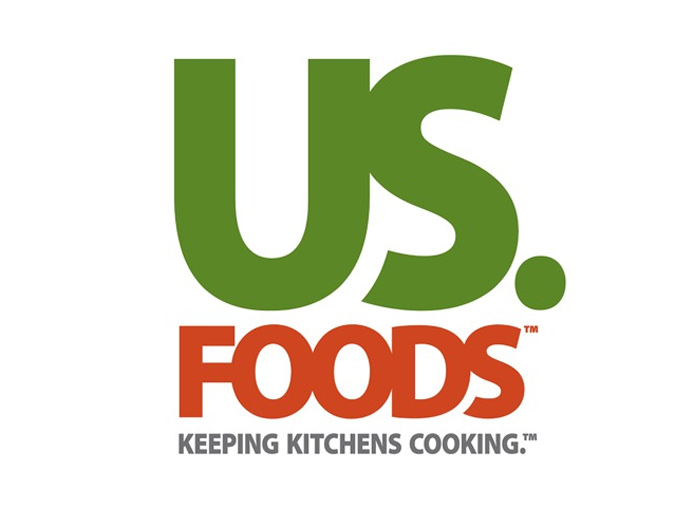Half of Restaurant Decision Makers View Technology as Important to Their Operations, But Only One-Third are Implementing It, According to a New US Foods Survey
May 15, 2019 | 5 min to read

ROSEMONT, Ill. -US Foods Holding Corp. (NYSE: USFD) today released the results of a new survey of 500 independent restaurant decision makers to gauge their outlook on critical operational decisions. Although half of restaurant decision makers think technology is a way to address food waste, manage staff and drive customer traffic, only one-third of them are implementing it.
“This gap between the promise and adoption of technology to run restaurants successfully is an important one to close,” said Adam Stinn, director of business solutions for US Foods. “There is a universe of technology solutions that can reduce the operating headaches. But that’s also the problem – the number of choices and the time it takes to sort through them. Through our CHECK Business Tools program, we have taken the guesswork out of the equation by helping operators diagnose the opportunity and invest in the right solution. Whether it’s a website upgrade, online ordering or back of the house efficiency, we have vetted hundreds of solutions to bring our customers the right technology to solve their biggest challenges.”
There are three primary areas in which independent operators have identified the biggest opportunities: driving customer traffic, simplifying staffing and reducing food waste. US Foods’ survey further explores restaurant decision makers’ views on these topics.
Driving Customer Traffic
It’s no surprise that in today’s shifting digital world, the way restaurants attract new customers has changed. According to the survey results, a quarter of restaurant decision makers feel that attracting customers has gotten harder in the last year.
Compared to a year ago, marketing decision makers are investing more into how they promote their restaurants, with 75 percent offering more specials for customers, 68 percent spending more on digital advertising, 67 percent hosting more events and 51 percent using third-party services. Most marketing decision makers (80 percent) said keeping up with the competition’s marketing efforts was important to them.
To help drive online and in-store customer traffic, US Foods offers a suite of solutions through CHECK Business Tools, including menu design support to drive profitability, online ordering capabilities for to-go sales and website design support.
Staffing Can Be Stressful
Thirty-five percent of restaurant operators say that they currently have job openings that are proving hard to fill.1 So it’s no surprise that US Foods’ survey found that half of restaurant decision makers named hiring, training or managing staff as their greatest sources of stress.
Forty-nine percent also expressed concern about a labor shortage in the restaurant industry, and only 59 percent felt confident in hiring skilled employees. Further, only 20 percent said they were increasing their recruiting efforts and only 30 percent were creating robust employee training programs.
To help solve for these staffing challenges, CHECK Business Tools can help operators optimize key restaurant staffing processes including team management, scheduling and staff training so operators can recruit quality candidates, track labor expense, simplify payroll, and attract and retain quality staff.
Fighting Food Waste
Waste is a costly part of running a restaurant. More than a third of food in the U.S. is lost or wasted, which amounts to 133 billion pounds or $161 billion worth of food each year.2 According to the US Foods survey, 79 percent of restaurant decision makers are at least somewhat concerned about food waste in their restaurant, but they struggle to prioritize and act on their concern, citing inefficient food preparation (36 percent), the inability to accurately forecast demand (35 percent) and portion sizes (34 percent) as the main drivers of waste in their restaurants.
Three in five (58 percent) food decision makers say they are tracking some things related to food waste but know they could be doing more to meet their goals.Meanwhile,only about a third (30 percent) have a formal process in place to track their goals.
To combat spoilage, over-portioning and pilferage, CHECK Business Tools include menu profitability support that will monitor the profitability of each menu item and standardize all recipes. Purchasing and inventory management solutions are also available so that operators know exactly what to order and when, based on accurate predictive sales forecasting.
New to the CHECK Business Tools Lineup
US Foods is also announcing a new partnership to add Toast, the fastest-growing restaurant management platform in the U.S., to the CHECK Business Tools portfolio. Toast powers successful restaurants of all sizes with a technology platform that combines restaurant POS, front of house, back of house and guest-facing technology with a diverse marketplace of third-party applications.
For more information on CHECK Business Tools, please visit https://www.usfoods.com/our-services/check.html.
About US Foods
US Foods is one of America’s great food companies and a leading foodservice distributor, partnering with approximately 250,000 restaurants and foodservice operators to help their businesses succeed. With 25,000 employees and more than 60 locations, US Foods provides its customers with a broad and innovative food offering and a comprehensive suite of e-commerce, technology and business solutions. US Foods is headquartered in Rosemont, Ill. and generates approximately $24 billion in annual revenue. Visit usfoods.com to learn more.
Survey Methodology
US Foods and TRUE Global Intelligence™, the in-house research practice of FleishmanHillard, conducted a 10-minute online survey among a sample of 508 restaurant operators, from April 19 through April 29, to explore the operational challenges, needs and attitudes among restaurant operators. Sub-groups of restaurant operators with staffing decision-making responsibilities (n=456), marketing decision-making responsibilities (n=439), and food management decision-making responsibilities (n=389) were analyzed. The margin of error is +/-4.4 percent at a 95 percent confidence level.
